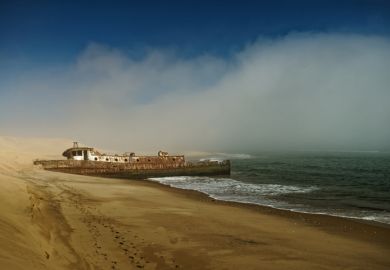When India became independent 49 years ago, it was the seventh largest industrial country in terms of volume (though not per capita) of industrial output. There was a consensus across the political spectrum that India should plan its industrialisation with a large and active role for the state and very little role if any for foreign capital. India created some of the first institutions for development planning and had available for advice some of the best economists, scientists and engineers from within its own people. The planning process with a series of five-year plans was meant to make India a self-sufficient, growing and equitable economy which would have little poverty.
By the late 1970s, 20 years after planning started, it was clear that India had settled down to a moderate growth rate of 3.5 per cent per annum and around one and a quarter per cent per capita. It had the largest degree of self-sufficiency for any mixed economy which had not adopted Leninist planning. The state played a leading role in the heavy industries and any new technologies that came along. But growth was too sluggish and unemployment mounted. For many years the excuse for not pursuing a high-growth strategy was that extra employment generated extra demand for food and India did not produce enough. But by 1980 the Green Revolution had occurred and India's farmers were producing a large and growing quantity of food.
India's problem was very soon seen as the relative stagnation of its economy - the Hindu rate of growth as it was labelled. A small window was opened to foreign borrowing by Mrs Gandhi but this was from the IMF and the allocation of that money was in the hands of the planners. In the 1980s India borrowed abroad though the economic structure was unreformed. The money was largely wasted in low-yield projects. Then India started borrowing from its diaspora at commercial rates to pay interest on debts incurred earlier. This game of Ponzi finance crashed in 1991 and India had to reform.
Vijay Joshi and Ian Little have already written a superb account of the Indian economy up to 1991 India: Macroeconomics and Political Economy, 1964-1991. Little has been writing about India for 40 years and more and Joshi has been writing with Little and on his own for some 25 years from his Oxford base. The present book is an updating of the earlier work and details the reform process after Narasimha Rao came to power in June 1991 and with the help of Manmohan Singh, his finance minister, turned the economy around. Much had to be done. Tariffs and quotas had to be dismantled and the protective layers that made Indian industry inefficient had to be removed. In domestic industrial policy a whole raft of regulations known as the licence-permit raj had to be thrown away so that Indian entrepreneurs could take advantage of their resources. Paradoxically these regulations had been created to curb large companies and monopoly power but the large companies worked their way around these regulations by bribing the ministers and starting new companies. They enjoyed tariff protection as well as subsidised interest rates. So all the restrictions helped the large companies and hurt the small and medium enterprises where Indian's real entrepreneurship thrives. But as inefficient as the large private-sector companies were, the public enterprises were worse, enjoined not to make profits in the name of socialism.
What precipitated the reform was a critical shortage of foreign exchange. With reserves worth only two weeks' imports and high oil prices in the months before the Gulf War, India went begging for foreign loans. This experience strengthened the reformers. The license-permit raj was wound down. Tariffs had to be cut and that process is well covered in this book. Foreign capital was in principle welcome, though the old bureaucratic structures are still resistant. After a severe shock in 1992, which led to low growth, India began to recover. After a couple of years at 5 per cent, growth went up to 7 per cent. Exports are becoming a dynamic part of the economy.
But India is still not a tiger. Problems remain. The fiscal situation is dire with internal debt so high that half of public revenue goes in interest payments. Joshi and Little highlight this problem and discuss tax reforms. Tariff cuts are a loss to public revenue and reform thus requires a rethink of fiscal policy. The reasons why the budget deficit is difficult to control is political. But the authors have left politics out. This is a pity because the Indian polity has thrown up endogenous limits to the reform process. The reasons why India is not a tiger are by and large political and not economic. To know why, read the authors' previous book, or perhaps their next one.
Lord Desai is professor of economics, London Schoolof Economics.
India's Economic Reforms 1991-2001
Author - Vijay Joshi and Ian Little
ISBN - 0 19 829078 0
Publisher - Clarendon Press, Oxford
Price - £25.00
Pages - 282



